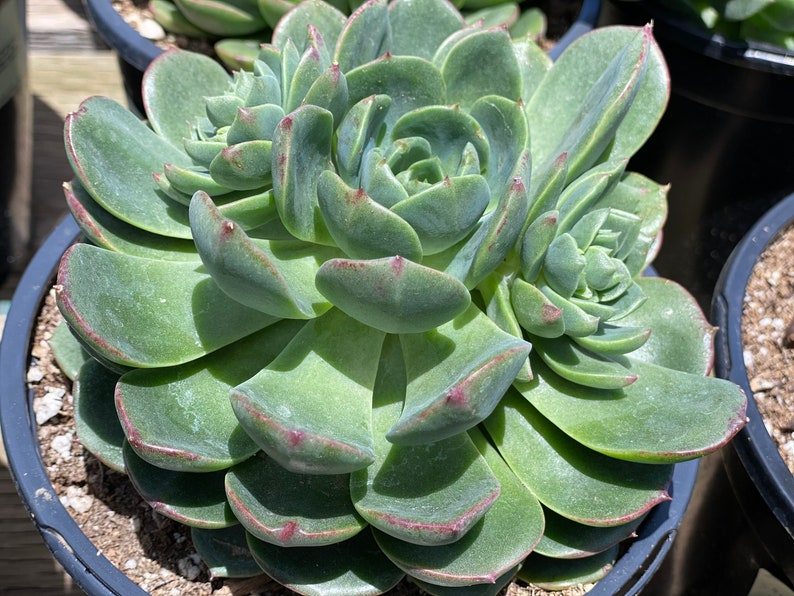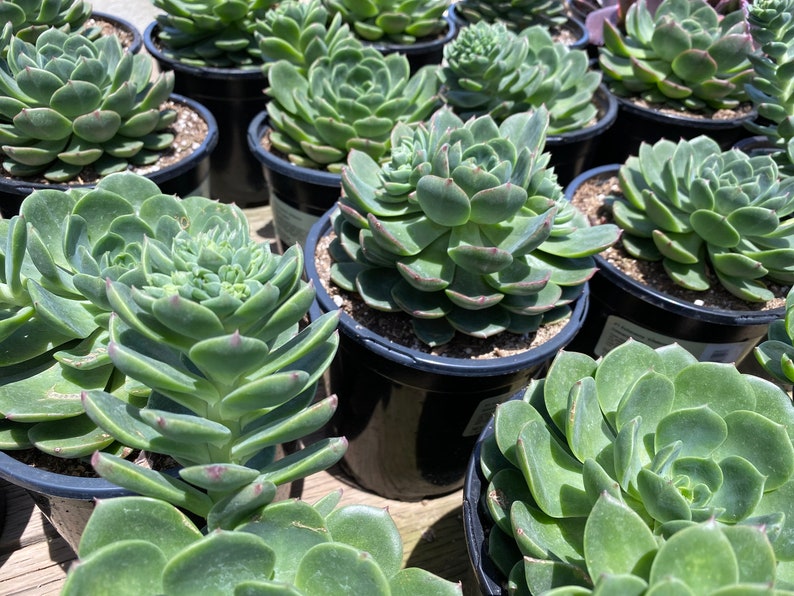Elfstone Succulent: Growing and Caring Guide
Elfstone succulents (Echeveria Crassulaceae) are unique and captivating plants that make a stunning addition to any indoor or outdoor space.

Known for their elongated, tubular leaves and striking appearance, these succulents are relatively easy to care for, making them a popular choice among plant enthusiasts.
In this article, we will provide you with a concise yet comprehensive guide on Growing Elfstone succulent and giving the plant best care, ensuring your plants thrive and flourish.
Key Features:
Scientific Name: Graptopetalum paraguayense
Alternative/English Names: Ghost Plant, Mother of Pearl Plant, Mexican Gem
Color: Pale blue-green to silvery-gray leaves with pinkish-red tips
Taste: Not typically consumed, but considered non-toxic
Height: 4-6 inches (10-15 cm)
Spread: 6-12 inches (15-30 cm)
What is Elfstone succulent?
The Elfstone succulent, also known as the Ghost Plant or Mother of Pearl Plant, is a captivating and unique succulent native to Mexico. Its distinctive appearance is characterized by rosettes of fleshy, elongated leaves that range in color from pale blue-green to silvery-gray, often with pinkish-red tips.
This mesmerizing combination of hues creates a beautiful, otherworldly display that has made the Elfstone a popular choice among succulent enthusiasts.
Beyond its striking beauty, the Elfstone succulent is prized for its low-maintenance nature and ease of care. It is a slow-growing plant that can thrive in various indoor and outdoor conditions, making it an excellent choice for both novice and experienced gardeners alike.
While not typically consumed, the Elfstone succulent is considered non-toxic to humans and pets, making it a safe addition to homes and gardens where children and furry friends may be present.
Growing This Plant
To cultivate the Elfstone succulent successfully, it is essential to provide the right growing conditions. This plant thrives in well-draining soil, preferably a cactus or succulent potting mix. Proper drainage is crucial to prevent root rot and ensure the plant's health.
Propagation
Propagation is best done through stem cuttings. Allow the cuttings to callus for a couple of days before planting them in well-draining soil.
The plant may also be propagated from leaves. Place a leaf on the surface of the soil, and within a few weeks, it will produce roots and a small rosette will grow next to the rooted leaf. The original leaf will dry up and crumble off the new plant.
Temperature Needs:
The Elfstone succulent prefers moderate to warm temperatures ranging from 65°F to 80°F (18°C to 27°C). It can tolerate slightly cooler temperatures during the winter months but should be protected from frost and freezing conditions.Watering Guidelines:
Like many succulents, the Elfstone is drought-tolerant and requires infrequent watering. During the growing season (spring and summer), water the plant when the soil is partially dry, allowing the top inch or two of soil to dry out between waterings. In winter, reduce watering frequency to prevent root rot.Potting and Repotting:
When potting or repotting the Elfstone succulent, choose a well-draining container with drainage holes. Terracotta or unglazed ceramic pots are ideal choices. Repot the plant every two to three years, refreshing the soil and providing more room for growth.Step-by-Step Growing Instructions:
- Obtain a healthy Elfstone succulent from a reputable nursery or online source.
- Prepare a well-draining cactus or succulent potting mix.
- Select a suitable pot with drainage holes and fill it with the prepared soil mix.
- Gently remove the plant from its current container and untangle the roots if necessary.
- Plant the succulent at the same depth it was previously growing, and firm the soil around the base.
- Water the plant thoroughly after planting, allowing any excess water to drain.
- Place the pot in a location with bright, indirect sunlight and maintain the recommended temperature range.
- Water the plant when the soil is partially dry, following the watering guidelines mentioned above.
- Repot every two to three years, or when the plant becomes root-bound.
Elfstone Succulent Care
Elfstone succulents are native to South Africa and are well-adapted to arid environments.
To ensure their optimal growth and health, it's essential to focus on the following care aspects:
| Aspect | Guidelines |
|---|---|
| Sun Exposure | Full sun |
| Watering | Allow the soil to dry out between waterings. |
| Soil | Well-draining cactus or succulent mix, rocky, and sandy. |
| Temperature | 60°F to 75°F (15°C to 24°C) |
| Humidity | Moderate to low humidity levels |
| Pruning | Trim leggy or damaged stems to maintain a compact shape. |
| Propagation | Through stems and leaves |
Sunlight Requirements
Place them near a south-facing window or provide them with filtered light.
Avoid exposing them to direct sunlight for prolonged periods, as it can cause leaf burn.
Watering Guidelines
Water Elfstone succulents sparingly. Allow the soil to dry out completely between waterings to prevent root rot.
Stick your finger into the soil, and if it feels dry up to the first knuckle, it's time to water.
During the winter months, reduce watering frequency further.
Fertilization
This plant does not need much fertilizing, but using a balanced, water-soluble fertilizer diluted to half the recommended strength is beneficial.
Apply the fertilizer every two to four weeks to provide the necessary nutrients. Avoid getting fertilizer on the leaves, as it may burn them.
Soil
Use a well-draining cactus or succulent potting mix for Elfstone succulents.
A simple homemade soil of 1 part potting soil, 1 part perlite, and 1 part coarse sand is an ideal medium for indoor echeveria plants.
Outdoors, provide some mulch around them with gravel or sand to help prevent weeds and conserve moisture.
Temperature and Humidity
Elfstone succulents prefer temperatures between 60°F and 75°F (15°C to 24°C).
They can tolerate slightly lower temperatures but are sensitive to frost. Moderate to low humidity levels are ideal for these plants.
Pruning
Pruning is not typically required for Elfstone succulents. However, you can trim leggy or damaged stems to maintain a compact shape.


Common Pests and Diseases
Elfstone succulents are generally resistant to pests and diseases. However, aphids, spider mites, and mealy worms can be prime pests.
Spray the plant with rubbing alcohol to get rid of any insects. The most common issues result from overwatering.
Excess moisture in the soil can cause the plant's roots and stems to rot.
Only water these plants when their soil is dry to the touch. Plants that are kept in too little light will get leggy, and the color will suffer.
Conclusion
By following these guidelines, you can ensure that your Elfstone succulents thrive and remain healthy.
Remember to provide them with adequate sunlight, water sparingly, use well-draining soil, maintain appropriate temperature and humidity levels, fertilize judiciously, and address any pests or diseases promptly.
With proper care, your Elfstone succulents will continue to delight you with their unique appearance for years to come.
